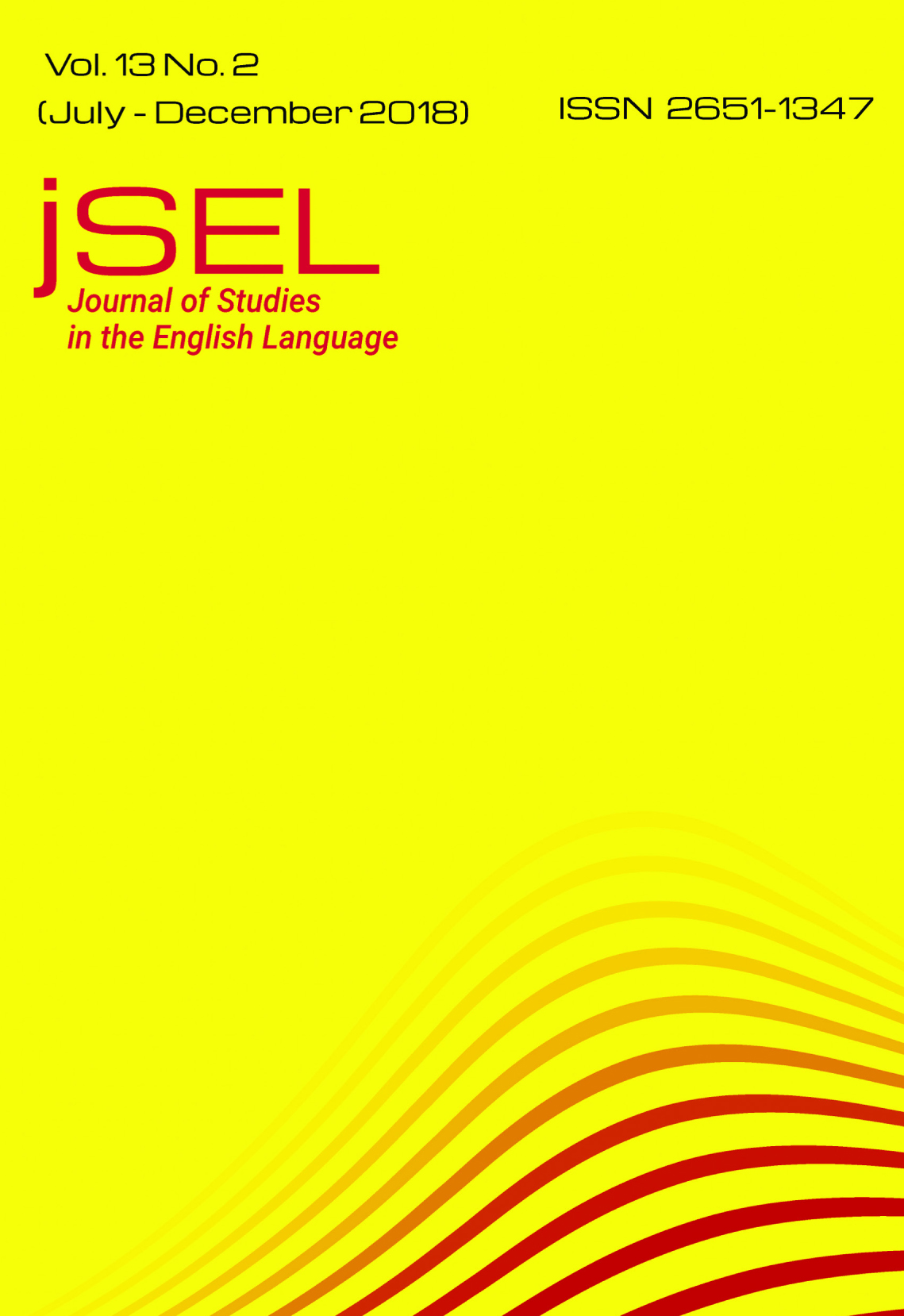Developing E-Materials for Teaching Synthetic Phonics to Elementary Students
Main Article Content
Abstract
The objectives of this study were 1) to develop electronic materials for teaching synthetic phonics to elementary students; 2) to explore the effectiveness of values of electronic materials for teaching phonics; and 3) to investigate students’ opinions toward e-materials for teaching phonics. The sample consisted of 30 students from grade 6. The instruments in this research were the developed website, the semi-structured interview, and the 80/80 standard for the effectiveness of value. The results illustrated that: 1) the developed website following ASSURE model consisted of the sounds of /s/, /a/, /t/, /p/, /i/, /n/, /m/, /d/, /g/, /o/, /c/, /k/, /ck/, /e/, /u/, /r/, /h/, /b/, /f/, /ff/, /l/, /ll/, and /ss/; 2) the result of the effectiveness of value of the developed material was 79.22/77.5 considered as the effective material; and 3) the positive opinions from students towards the material stated that the developed website helped improve their reading aloud.
Article Details
References
S. B. Neuman (Eds.), Handbook of early literacy research (pp. 52-63). New York, NY: The Guilford Press.
Botirca, M. O. (2007). Teaching English with Video (Unpublished Master’s Thesis). University Din Pitesti, Pitesti,
Romania.
Brahmawong, C. (2013). Developmental testing of media and instructional package. Silpakorn Education Research
Journal, 5(1), 7-20.
Brinkley, A., Dessants, B., Flamm, M., Fleming, C., Forcey, C., & Rothschild, E. (2011). The Chicago handbook for
teachers: A practical guide to the college classroom. Chicago, IL: University of Chicago Press.
Ciaffaroni, M. T. (2006). How good are ESL/EFL websites? Teaching English with Technology. Retrieved from
https://www.iatefl.org.pl/call/j_web26.htm
Clarke, D. F. (1989). Communicative theory and its influence on materials production. Language Teaching, 22(2), 73-
86.
Darnawati, Jamiludin, Mursidin, & Yuniar, N. (2016). Learning through media development model application assure.
IOSR Journal of Humanities And Social Science, 21(11), 20-25.
Dorkchandra, D. (2010). Enhancing English reading comprehension through a text structure reading strategy call
program (Doctoral Dissertation). Suranaree University of Technology, Nakhon Ratchasima.
Ehri, L. C., Nunes, S. R., Stahl, S. A., & Willows, D. M. (2001). Systematic phonics instruction helps students learn to
read: Evidence from the national reading panel's meta-analysis. Review of Education Research, 71(3), 393-447.
Eshiet, O. I. (2014). Synthetic phonics as a tool for improving the reading skills of Nigerian pupils (Doctoral
Dissertation). Newcastle University, London.
Faryadi, Q. (2007). Instructional design models: What a revolution!. Retrieved from https://files.eric.ed.
gov/fulltext/ED495711.pdf
Fewings, J. (2015). Discover your preferred learning style. Retrieved from https://www.brainboxx.co.
uk/a3_aspects/pages/VAK_quest_2.htm
Guo, P. (2013). Optimal video length for student engagement. Retrieved from https://ctat.roanestate
.edu/wp-content/uploads/video_Length_-for_Engagement.pdf
Harasim, L. (1989). Online education: A new domain. In R. Mason & T. Kaye (Eds.), Mindweave: computers,
communications and distance education. Oxford, UK: Pergamon Press.
Ifeoma, O. M., & Ibiam, J. U. (2013). The efficacy of jolly phonics instructional strategy on the writing ability of junior
primary pupils’ in Uyo senatorial district of Akwa Ibom State, Nigeria. Merit Research Journal of Education and
Review, 1(9), 203-207.
Johnston, R., & Watson, J. (2014). Teaching synthetic phonics in primary schools. London: SAGE.
Kelly, L. (2007, November). Visitors and learners: Adult museum visitors' learning identities. Paper Presented at the
ICOM-CECA Conference Vienna, Austria.
Kodae, H., & Laohawiriyanon, C. (2011). Effects of intensive phonics instruction on reading and spelling attainment of
Thai grade 5 learners with reading difficulties. Proceedings -Teaching Technique of The 3rd International
Conference on Humanities and Social Sciences (April 2, 2011). Faculty of Liberal Arts, Prince of Songkla University.
Kurt, S. (2015). ASSURE: Instructional design model. Retrieved from https://educationaltechnology.
net/assure-instructional-design-model/
Ladkert, K. (2014). Development of English pronunciation with phonics. Retrieved from
https://dspace.unimap.edu.my/dspace/bitstream/123456789/34620/1/SILK%202014_6.pdf
Lewis, M., & Ellis, S. (2006). Introduction phonics: The wider picture. in phonics: Practice, research and policy.
London: SAGE.
Mano-im, R. (1999). The pronunciation of English final consonant clusters by Thais (Unpublished Master’s thesis).
Chulalongkorn University, Bangkok.
Office for Standards in Education (Ofsted). (2011). Getting them reading early. Manchester: Ofsted.
Sundayana, R., Herman, T., Dahlan, J., & Prahmana, R. (2017). Using ASSURE learning design to develop students’
mathematical communication ability.World Transactions on Engineering and Technology Education, 15(3), 245-249.
Smaldino, S. E., Lowther, D. L., & Russell, J. D. (2012).Instructional technology and media for learning (10th ed). New
York, NY: Pearson.
Thaen-ng, J., & Leenam, W. (2016). The use of phonics instruction to enhance students’ reading ability: A case
study of grade 3 students at Nam Yuen School, Nam Yuen district, Ubon Ratchathani province. International
Journal of Research - GRANTHAALAYAH, 4(10), 65-71.
Tomlinson, B. (2011). Materials development in language teaching (2nd ed). Cambridge: Cambridge University Press.
Tuptim, N. (2016). Japanese instructional package for developing sport tourism staff (Caddies). Journal of Community
Development Research (Humanities and Social Sciences), 1(6), 1-6.

